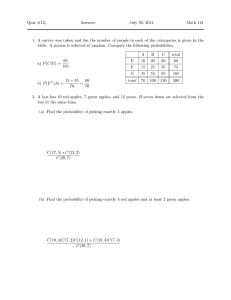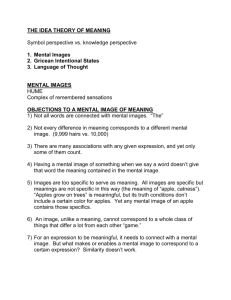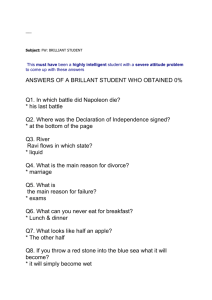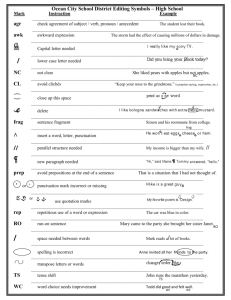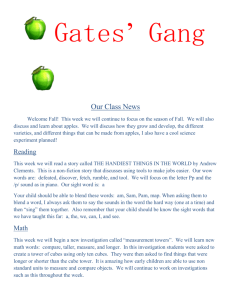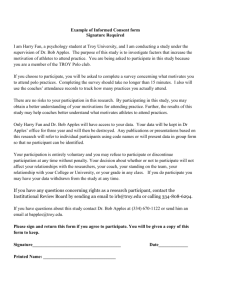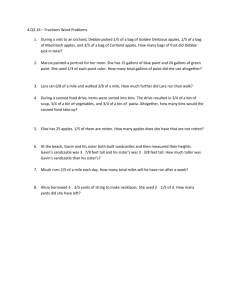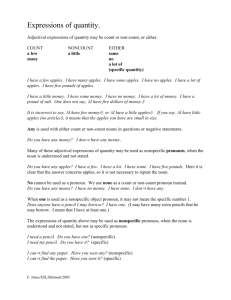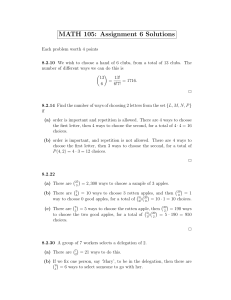Lesson Plan- General Notes on Public Speaking and Audience
advertisement
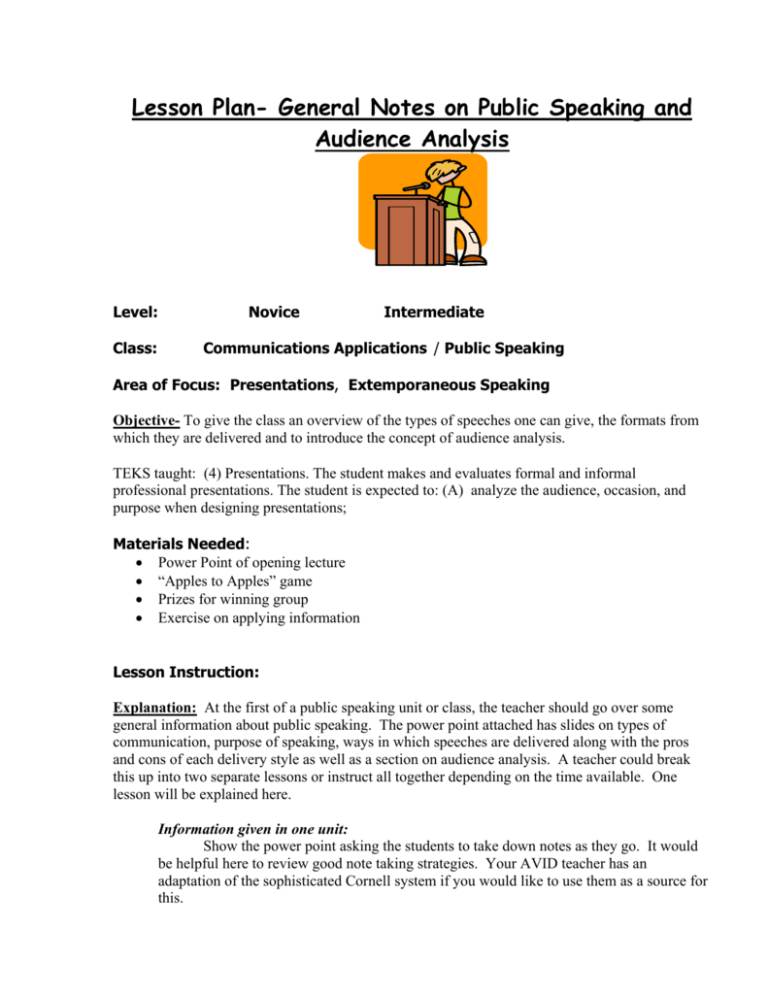
Lesson Plan- General Notes on Public Speaking and Audience Analysis Level: Class: Novice Intermediate Communications Applications / Public Speaking Area of Focus: Presentations, Extemporaneous Speaking Objective- To give the class an overview of the types of speeches one can give, the formats from which they are delivered and to introduce the concept of audience analysis. TEKS taught: (4) Presentations. The student makes and evaluates formal and informal professional presentations. The student is expected to: (A) analyze the audience, occasion, and purpose when designing presentations; Materials Needed: • Power Point of opening lecture • “Apples to Apples” game • Prizes for winning group • Exercise on applying information Lesson Instruction: Explanation: At the first of a public speaking unit or class, the teacher should go over some general information about public speaking. The power point attached has slides on types of communication, purpose of speaking, ways in which speeches are delivered along with the pros and cons of each delivery style as well as a section on audience analysis. A teacher could break this up into two separate lessons or instruct all together depending on the time available. One lesson will be explained here. Information given in one unit: Show the power point asking the students to take down notes as they go. It would be helpful here to review good note taking strategies. Your AVID teacher has an adaptation of the sophisticated Cornell system if you would like to use them as a source for this. HOOK 1. Several games can be used to stress the importance of audience analysis in public speaking. a. Apples to Apples available at most stores with a game section (i.e. Target) is the one that this lesson will use. b. Persuade: An Educational Game for Developing Persuasive Skills offered by Contemporary Drama Service Box 7710 Colorado Springs, CO 80933 is a useful game. 2. Read the rules to Apples to Apples so you can explain it to the class. You will follow the rules as written except that your class will play as teams instead of individually. 3. Tell the class we are going to do an activity that stresses the importance of audience analysis. Divide class up into teams of four. Have them arrange desks so that all four join into a square. Explain the rules of the game as printed in the instructions. 4. Pass out the cards, and begin to play. Debrief: 1. As the game concludes, follow up with the following questions: a. As the game progressed, did you begin to alter your strategy depending on who the “judge” was? b. What were the different ways judges made choices on the card they would choose? (logical choice, stupid choice, deep thinking choice, humorous choice) c. What did the team that won use as a strategy? d. Why were they successful? e. In what way did this illustrate the concepts of audience analysis? 2. Pass out “prizes” to winning group. Assessment: Pre: 1. Before showing power point, ask students to list situations in which a specific message would be inappropriate for a specific audience. Give some examples (future goals at a preschool graduation, benefits of free choice to an audience of Chinese diplomats, etc) 2. As students are taking down notes, check for understanding by asking them to volunteer examples of situations from the media and/or real life experiences. During: 1. As the game progresses, check to see if the students are getting the hang of evaluating the cards based on their opinions or what they think the judge will say. 2. Correct and re-explain the process if a group is still picking their match card based on what they think is a good match rather than what they think the judge will think. (Note: This will make sense after you read the rules and begin to play) 3. As a group emerges that seems to be gaining more winning guesses than the others, ask them why they made the choice they made. Extend answers. Post: 1. Pass out Introduction exercise 2. Students can do it as a group or individually depending on teacher’s preference. 3. Students can turn in paper for teacher to assess, or they can volunteer to read their paper to the class and the class can evaluate correctly and incorrectly addressed introductions. 4. See example for suggestions Resources: • • • See Hook 2 A and B for games sources Power Point on Public Speaking and Audience Analysis (attached) Introduction Exercise Handout (attached)
